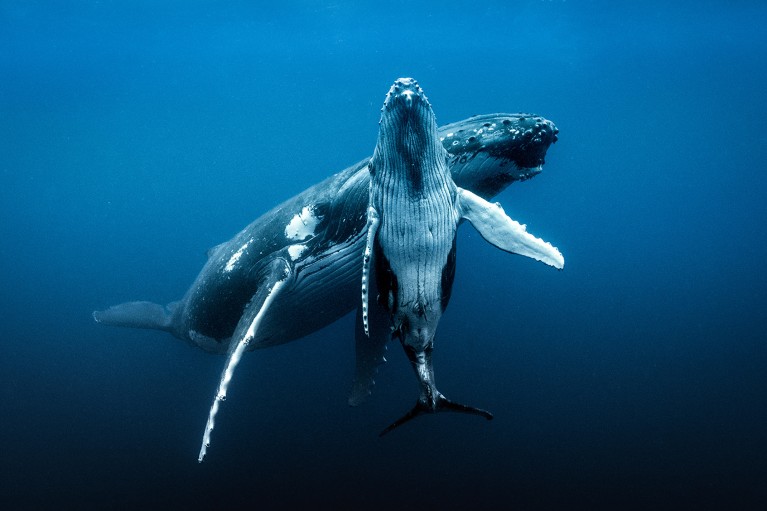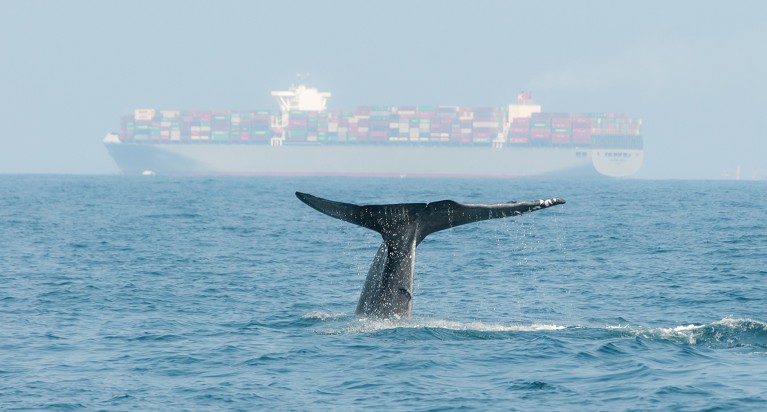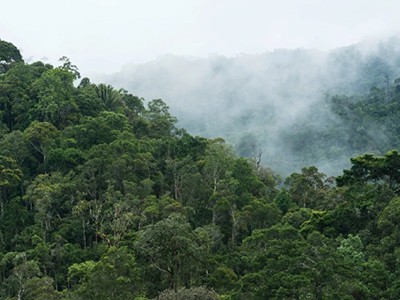
Humpback whales (Megaptera novaeangliae) were hunted to near extinction by commercial whaling, their numbers have since resurged.Credit: Connect Images/Alamy
At the height of the whaling industry, thousands of whales were killed each year — mainly for their oil, a fuel used widely throughout the eighteenth and nineteenth centuries. By the 1930s, more people were becoming aware that whaling was unsustainable. In 1946, the International Convention for the Regulation of Whaling (ICRW) was signed, and the International Whaling Commission (IWC) was established as the decision-making body to deal with the problem. It was the world’s first global convention designed to address a significant threat to wildlife.
The IWC will hold its 69th meeting in Lima in September. As the convention nears its 80th anniversary, we propose that the IWC hands over several pending issues to other conventions and national governments and closes up shop.
The IWC’s accomplishments — managing global whale populations and especially implementing a moratorium on commercial whaling in 1985 — are laudable. But these achievements lie four decades in the past. IWC meetings since have been a source of acrimonious and fruitless dialogue among member nations. By exiting with dignity, the IWC would set a powerful example for the international environmental community.
A bright beginning
The ICRW was originally established to deal with the “conservation of whale stocks and … the orderly development of the whaling industry”. Conservation in this context meant ensuring that enough whales were protected so that some could be harvested sustainably. But as it became clear that most species were in severe population decline1, the IWC decided in 1982 that commercial whaling for all species everywhere should cease from the 1985–86 season onwards2.
The agreement was groundbreaking in its ambition. It led to the near-total cessation of whaling activities, with a few notable exceptions (see ‘Where whaling still goes on’), and has contributed to the resurgence of many whale species, including the largest animal on Earth, the blue whale, Balaenoptera musculus (see ‘Making a comeback’).
This is a huge achievement. But in the years since, the convention has done little to help conserve the great whales (including the gray, humpback, right, sperm, bowhead and minke whale), or encourage the sustainable harvesting of their populations.
The number of ICRW member nations (many of which have never whaled) has ranged from around 30 in 1990 to nearly 90 today. After the moratorium on whaling was established, many IWC government members were not prepared to revisit it; work on a ‘comprehensive assessment’ to evaluate the impacts of the moratorium has proceeded at a snail’s pace; and two attempts to reform the convention and achieve further useful outcomes from it failed2. Meanwhile, despite decades of discussion, the IWC has had virtually no impact on the whaling that has persisted since 1985. Indeed, none of the nations with limited whaling programmes — Norway, Iceland and Japan — engage in any meaningful way with the convention.
Despite the IWC having so little to show from the past four decades of operations, participants and observers continue to meet — once every two years since 2012, rather than annually. And the IWC continues to absorb the time, energy and resources of its members and engaged civil-society organizations. A dispute that began at the IWC but ended up in the International Court of Justice in 2013, for example, involving the Australian and Japanese governments, cost more than Aus$20 million (US$13 million) but had no discernible impact on whale conservation.

Source: IWC
Exit with dignity
Today, the IWC should celebrate its accomplishments, devolve its final responsibilities and send a powerful message about the importance of knowing when to stop.
Indigenous Arctic communities have continued to hunt whales for sustenance3, with quotas being set by the IWC since 1983 having no discernible effects on whale populations. Even so, in the coming decades, subsistence whaling must be managed effectively, with quotas for each Indigenous group being allocated on the basis of scientific evidence. If the IWC no longer existed, each country could manage their own subsistence whaling. Indeed, Target 5 of the Kunming–Montreal Global Biodiversity Framework, which 196 countries have agreed to meet by 2030, is to “ensure that the use, harvesting and trade of wild species is sustainable, safe and legal … while respecting and protecting customary sustainable use by indigenous peoples and local communities”.
Similarly, the whaling currently undertaken by Japan, Norway and Iceland — in each nation’s exclusive economic zone, and of species whose populations are currently stable — does not need oversight from almost 90 nations.
Some people might argue that letting countries regulate and manage their own whaling in their own waters could result in a resurgence of large-scale commercial whaling. We think that this is extremely unlikely, not least because of the lack of demand for whale products (oil and meat) and changing attitudes around wildlife. What’s more, several other conventions can provide protection against such a scenario.

Japan, Norway and Iceland still conduct commercial whaling.Credit: Getty
The Convention on International Trade in Endangered Species of Wild Fauna and Flora (CITES), for example, regulates international trade of endangered wildlife4. All whale species regulated by the IWC are included in CITES Appendix I, a list of the most endangered species. Therefore, international trade of these species is prohibited. All other whale species are included in CITES Appendix II, which means international trade of all cetacean products is regulated. Similarly, the Convention on the Conservation of Migratory Species of Wild Animals (CMS), which already conserves small cetaceans in some regions, such as dolphins and porpoises, could also conserve whales. In fact, the scientific body of the CMS (the Scientific Council) could function, in part, as a global whale observatory, and alert the world to negative trends in any species. Today, the biggest threats to whales are ship strikes, pollution and climate change.
Consolidate and streamline
More than 3,000 international environmental agreements and organizations exist today5. Some of these, such as the Montreal Protocol on ozone depletion, have achieved their goals or are close to doing so. Other initiatives have struggled to achieve much6. Today, the many institutions that have had little impact collectively expend millions of dollars annually on secretariats and meetings, and use up time and resources from governments and civil-society organizations.
Conservation interventions are effective but far from sufficient
In our view, various broader international conventions could be used in place of other wildlife conservation agreements. The United Nations Framework Convention on Climate Change, for example, could take over the residual tasks of the Montreal Protocol. The Convention on Biological Diversity could similarly achieve the goals of the 53-year-old Convention on Wetlands7. (In fact, the Convention on Conservation of Nature in the South Pacific suspended operations in 2006 for exactly this reason.)
Such consolidation would increase efficiency and effectiveness. Indeed, we urge this issue to be included as a key agenda item at the upcoming UN Summit of the Future, an event focused on how world leaders can safeguard the future, which will take place in New York City in September.
In 2018, political scientist Julia Gray at the University of Pennsylvania, Philadelphia, defined an international convention or organization that consumes time, energy and resources without generating added value as a zombie institution8. Such institutions project the illusion of solving problems even when they persist, or of problems persisting even when they no longer exist9. Zombie organizations undermine the very idea of multilateralism, in which multiple countries form an alliance in pursuit of a common goal. Proud legacies and historical achievements are important. But allowing institutions to become zombies serves no one.

